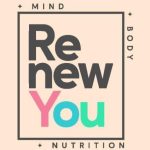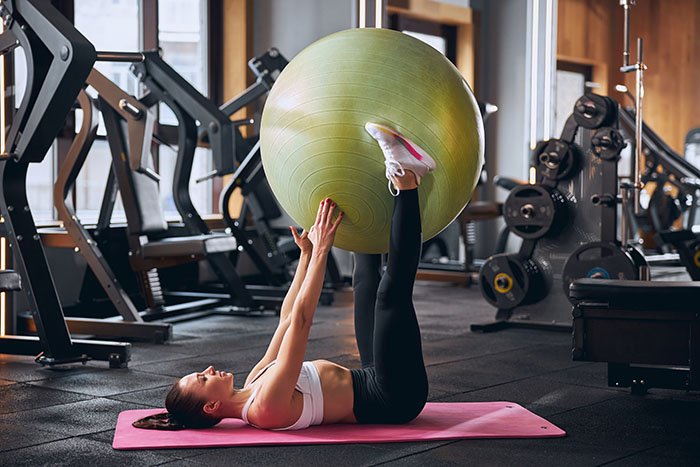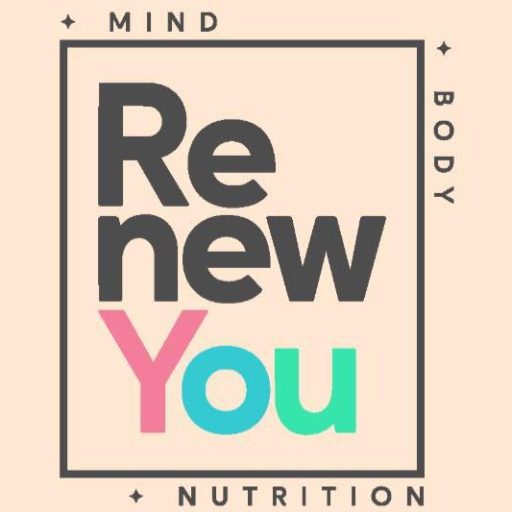
How to Improve Mental Health
Also called: Boost Emotional Wellness, Improve Emotional Health, Stay Positive.
What is mental health?
Mental health includes our emotional, psychological, and social well-being. It affects how we think, feel, and act as we cope with life. It also helps determine how we handle stress, relate to others, and make choices. Mental health is important at every stage of life, from childhood and adolescence through adulthood and aging.
Why is mental health important?
Mental health is important because it can help you to:
- Cope with the stresses of life
- Be physically healthy
- Have good relationships
- Make meaningful contributions to your community
- Work productively
- Realize your full potential
How can I improve my mental health?

There are many different things you can do to improve your mental health, including:
- Staying positive. It’s important to try to have a positive outlook; some ways to do that include
- Finding balance between positive and negative emotions. Staying positive doesn’t mean that you never feel negative emotions, such as sadness or anger. You need to feel them so that you can move through difficult situations. They can help you to respond to a problem. But you don’t want those emotions to take over. For example, it’s not helpful to keep thinking about bad things that happened in the past or worry too much about the future.
- Trying to hold on to the positive emotions when you have them
- Taking a break from negative information. Know when to stop watching or reading the news. Use social media to reach out for support and feel connected to others but be careful. Don’t fall for rumors, get into arguments, or negatively compare your life to others.
- Practicing gratitude, which means being thankful for the good things in your life. It’s helpful to do this every day, either by thinking about what you are grateful for or writing it down in a journal. These can be big things, such as the support you have from loved ones, or little things, such as enjoying a nice meal. It’s important to allow yourself a moment to enjoy that you had the positive experience. Practicing gratitude can help you to see your life differently. For example, when you are stressed, you may not notice that there are also moments when you have some positive emotions. Gratitude can help you to recognize them.
- Taking care of your physical health, since your physical and mental health are connected. Some ways to take care of your physical health include
- Being physically active. Exercise can reduce feelings of stress and depression and improve your mood.
- Getting enough sleep. Sleep affects your mood. If you don’t get a good sleep, you may become more easily annoyed and angry. Over the long term, a lack of quality sleep can make you more likely to become depressed. So it’s important to make sure that you have a regular sleep schedule and get enough quality sleep every night.
- Healthy eating. Good nutrition will help you feel better physically but could also improve your mood and decrease anxiety and stress. Also, not having enough of certain nutrients may contribute to some mental illnesses. For example, there may be a link between low levels of vitamin B12 and depression. Eating a well-balanced diet can help you to get enough of the nutrients you need.
- Connecting with others. Humans are social creatures, and it’s important to have strong, healthy relationships with others. Having good social support may help protect you against the harms of stress. It is also good to have different types of connections. Besides connecting with family and friends, you could find ways to get involved with your community or neighborhood. For example, you could volunteer for a local organization or join a group that is focused on a hobby you enjoy.
- Developing a sense of meaning and purpose in life. This could be through your job, volunteering, learning new skills, or exploring your spirituality.
- Developing coping skills, which are methods you use to deal with stressful situations. They may help you face a problem, take action, be flexible, and not easily give up in solving it.
- Meditation, which is a mind and body practice where you learn to focus your attention and awareness. There are many types, including mindfulness meditation and transcendental meditation. Meditation usually involves
- A quiet location with as few distractions as possible
- A specific, comfortable posture. This could be sitting, lying down, walking, or another position.
- A focus of attention, such as a specially chosen word or set of words, an object, or your breathing
- An open attitude, where you try to let distractions come and go naturally without judging them
- Relaxation techniques are practices you do to produce your body’s natural relaxation response. This slows down your breathing, lowers your blood pressure, and reduces muscle tension and stress. Types of relaxation techniques include
- Progressive relaxation, where you tighten and relax different muscle groups, sometimes while using mental imagery or breathing exercises
- Guided imagery, where you learn to focus on positive images in your mind, to help you feel more relaxed and focused
- Biofeedback, where you use electronic devices to learn to control certain body functions, such as breathing, heart rate, and muscle tension
- Self-hypnosis, where the goal is to get yourself into a relaxed, trance-like state when you hear a certain suggestion or see a specific cue
- Deep breathing exercises, which involve focusing on taking slow, deep, even breaths
It’s also important to recognize when you need to get help. Talk therapy and/or medicines can treat mental disorders. If you don’t know where to get treatment, start by contacting your primary care provider.
Source: https://medlineplus.gov/
**************************************************************************************
Monica Figueiredo – Mental Health Coach
Since 1994, I’ve been helping my clients optimize their wellness by developing a deeper understanding of their habits and lifestyle choices.
As a certified Mental Health Coach, I aim to help you create a balanced life that prioritizes your well-being and celebrates all aspects of your true self.
 Address: 11050 Crabapple Rd suite 109, building C – Roswell GA
Address: 11050 Crabapple Rd suite 109, building C – Roswell GA
Office Hours: 9am to 8pm | Phone: (330) 224-7757

What Is the Role of a Nutritionist?
Proper nutrition is essential to healthy living and overall well-being. A nutritionist can play an important role in your health by evaluating your diet and offering you personalized advice. Based on your health goals or medical needs, the nutritionist can make recommendations and put together meal plans. Nutritionists work in many settings, including hospitals, schools, health departments and private practices.
Nutritionist Functions
It is difficult to stay knowledgeable on the latest diet trends. If you are trying to lose weight or develop healthy eating habits, a nutritionist can provide guidance on how to safely and effectively reach your goals. Nutritionists develop meals plans, educate on portion control and are qualified to prescribe special diets for the treatment or prevention of diseases, such as heart disease and diabetes.
Clinical Nutritionists
Clinical nutritionists work in medical settings, such as hospitals, doctors offices and clinics. These nutritionists are in charge of providing medical nutrition therapy, a therapeutic method used to treat diseases by specifically tailoring the diet. Clinical nutritionists work with doctors and other health care professionals to develop meal plans that provide the appropriate amount of nutrients to patients, based on their medical conditions. Duties may include formulating meals for a feeding tube or providing nutrition education classes for people living with medical conditions.
Food Service Nutritionists
Food service nutritionists work in school cafeterias, restaurants and other large-scale food establishments. Following government or state policies is usually a critical component to this position. Specific guidelines must be followed regarding portion sizes, food group options and menu disclaimers. Routine audits and inspections are done to ensure kitchen staff and managers are in compliance with regulatory standards. Food service nutritionists also give advice for handling special dietary concerns and food allergies.
Sports Nutritionists
A sports nutritionist works with athletes and coaches to ensure top athletic performance. Individual plans are developed based on each athlete’s nutrient needs. A sports nutritionist also collaborates with athletic trainers to prevent injuries and help recovering athletes. Nutrient timing and proper supplementation are important for workouts, practice sessions and games. Sports nutritionists work for high schools, universities or professional organizations. Individual athletes may also hire sports nutritionists during the off season.
Choosing a Qualified Nutritionist
The term “nutritionist” does not guarantee you are working with an accredited and licensed professional. A person can claim to be a nutritionist even if she has no academic or clinical background in the field. To ensure you are working with a qualified professional, seek out a registered dietitian. These professionals have completed at least a bachelor’s degree approved by the Academy of Dietetics and Nutrition; finished a supervised practice program; and passed the national registration exam. Registered dietitians may use the term nutritionist, but a nutritionist without these qualifications may not use the title of a registered dietitian, designated as R.D. after the person’s name.
Source: https://www.livestrong.com/

The key differences between yoga and Pilates
 GETTY IMAGES
GETTY IMAGES
One is a holistic discipline originating from ancient India, the other a specific physical system devised by a German anatomist in the early 20th century: while there might be a lot of cross-over between yoga and Pilates, the two are inherently very different.
As practices today, yoga and Pilates are both celebrated for their numerous health benefits, from offering connection to the body and stress relief, to developing flexibility, strength, control and endurance. There are countless interpretations of both disciplines (and one person’s balance class is another person’s cardio) but what links them both is breath work.
Put simply, “the biggest difference between the two,” Jill Simpson, founder of yoga, Pilates, ballet and barre studio Ebb&Flow explains, “is the emphasis on the spiritual side in yoga classes.”
Zoe Bertali, yoga teacher at studio The Refinery elaborates: “Yoga is an integrated health management system using breath, movement and meditation to unite mind, body and spirit. It also incorporates elements of philosophy, science and an ethical way of living. Classes can range from gentle and nourishing to challenging and sweaty.” Indeed, there’s a yoga class for everyone out there; from the various more traditional forms like Hatha and Ashtanga to the creative interpretations such as anti-gravity yoga and laughter yoga.
Nahid de Belgeonne, somatic movement and yoga coach, highlights that, while modern yoga in the West has become largely about movement, the practice has much deeper roots. “Yoga is a spiritual philosophy: the physical practice makes up only one of the eight parts ( or limbs) of the yoga path. The other ‘limbs’ are ethical standards, self discipline, breath, sensory transcendence, focus, meditation and a bliss state where you transcend the self. The last four limbs are involved in meditation.”
THE ORIGINS OF PILATES
“Pilates was created by Joseph Pilates who was an anatomist and a mechanical genius,” Bertali says. “It is a physical system that uses very specific targeted exercises to improve strength, flexibility and posture with particular focus on the core. It is a disciplined practice that needs to be done on a regular basis to provide benefit”.
There tends to be fewer wild variations of Pilates teachings, with traditionalists favouring mat classes and those seeking more fitness-focused workouts opting for classes on resistance-based reformer machines. Classical Pilates, which marries mat work with a whole host of Pilates apparatus, is considered to be the practice in its truest form.
THE PHYSICAL BENEFITS
If you’re looking to develop core strength and balance, when practised regularly yoga and Pilates are both ideal exercises for this. Given that many of the poses in yoga and exercises in Pilates involve supporting your body weight, they also work various muscles all over your body.
Generally, Pilates is a disciplined practice that requires small movements focusing on various areas of the body. Simpson says that while Pilates students primarily work on core strength (as noted above), they reap “added benefits of muscle toning, overall strength, body control, and flexibility”.
Bertali adds that “if you like a more structured workout without the cardio component, this could be the workout for you.”
She also notes that yoga can help increase strength and flexibility through muscles and joints. “In active, fast-paced classes you are likely to build a lot of heat in the body which has a great regenerative effect” and, of course, you will burn calories.”
“In slower practices such as Yin yoga, where you hold the postures for longer, you begin to work on stretching and moving the fascia which is the deeper connective tissue around the muscles and joints, which ultimately helps with flexibility.”This content is imported from Instagram. You may be able to find the same content in another format, or you may be able to find more information, at their web site.
Source: https://www.harpersbazaar.com/

Why is it important to take care of the brain?
We hear a lot about keeping our hearts healthy, through following a healthy lifestyle, good diet and getting plenty of exercise. But taking care of our brain is just important. It’s the most important organ in our body, so brain health is vital for our overall health, as our brain functions control all our body’s functions. What’s more, a heathy brain will help your mind to stay alert, active and clear and help to promote good mental health.
Brain health is about keeping your mind active, feeding it plenty of nutrients and oxygen, and reducing risk factors that can harm the brain.
Chronic conditions that affect our overall physical health – like diabetes, heart disease or high blood pressure, can affect our brain health.
All these conditions can increase our risk of developing Alzheimer’s disease or certain forms of dementia, like vascular dementia.
Why lifestyle choices make a difference to our brain health
Medical research shows us that our brain health can be improved, and our risk of dementia and other age-related cognitive decline reduced by making improvements to our lifestyle.
Cutting out bad habits like smoking and excessive alcohol consumption, eating a healthy balanced diet and getting plenty of physical activity can all help to boost our brain health and potentially reduce our risk of dementia and other conditions in the long-term.
But there are other good reasons to take good care of your brain.
In a healthy brain, as in a healthy body, there is a process of renewal. As we get older that renewal slows and changes in the brain cells mean that the constant flow of new connections slows, resulting in a gradual decrease in cognitive function. That process is known as age-related cognitive decline, commonly recognisable as a tendency to become more forgetful. Although we can’t stop this ageing process, by keeping our brain healthy we can help ourselves to stay healthier for longer.
What are the common types of cognitive decline or impairment?
Cognitive decline or impairment can happen in several ways and for different reasons.
- Dementia
Dementia is the term used to describe a number of symptoms related to changes in how our brain works – and includes some specific conditions like Alzheimer’s disease. It is a progressive disease, meaning that it usually begins with very mild symptoms, which gradually get worse. These include memory loss, difficulties with problem-solving and problems communicating. It’s common in the over-65s, but there is evidence to show that early-onset dementia in the under-50s is on the rise. And researchers are discovering how much lifestyle can influence our chances of developing dementia in later life. That’s just one of the reasons to cut out those bad habits and embed healthier ones.
- Brain injury
Even a fairly minor head injury can lead to temporary impairment of the brain functions – typically the combination of headache and dizziness referred to as concussion. But did you know that symptoms ‘concussion’ can also include depression, irritability, fatigue and memory problems? Most people recover after a couple of weeks, but these after-effects can last months or years – even after a minor injury.
Although there’s no miracle cure for these after-effects, and you should always follow the advice of a health professional, there are ways that you can look after your brain.
My favourite ways to look after your brain
- Keeping fit
Keeping fit isn’t just good for our bodies, it also helps our brain. Regular exercise and being fit is good for our blood pressure, and also boosts blood flow and the development of blood vessels supplying oxygen to the brain. Keeping your weight down through exercise can also protect your brain by lowering your risk of diabetes.
- Brain fitness
Just as we get regular exercise to keep our bodies fit and healthy, we can also exercise our brain. Mental activities which challenge our thinking powers – like crosswords, other puzzles or learning a new skill – help to keep us alert. As do hobbies like crafts, listening to or making music or reading. Also, research shows that group activities like singing together also boosts your brain health (as well as your mood).
- Brain food
A diet rich in healthy fats is really good for the brain. Things like oily fish, rich in Omega-3 oils, and olive oil, broccoli, avocado, pumpkin seeds and even dark chocolate are great brain food. In general, though, the more natural your diet is, the better. Go for lean proteins rather than fatty cuts. If you’re a fan of the Mediterranean diet, it’s a great diet for brain health – and some studies have shown that it can be particularly beneficial if you’re recovering from brain injury
Try to cut down on sugar, processed foods and saturated fats. Although your brain depends on sugar (glucose) as its main fuel, too much of it is a bad thing. Studies have shown there is a link between excess blood sugar and memory and cognitive impairment. This is probably most severe in diabetes sufferers, where it has been shown that high blood sugar levels can lead to conditions which restrict the blood flow to the brain.
- Lifestyle change for your brain
Smoking is a really high brain health risk factor, potentially increasing your risk of dementia by 44%, as well as increasing the likelihood of heart disease and stroke. Need I say more?
Alcohol consumption at a low level may actually help to protect the brain, but as with most health aspects, the key is to keep it low to moderate. Excessive alcohol consumption can increase your risk of cognitive impairment and mental decline later in life
- Staying social
OK, so the current Covid-19 pandemic has restricted our social activities for the last couple of months, and will continue to do so for some time. But keeping in touch with your loved ones isn’t just good for your mental health, it’s actually good for your brain health, too. People with strong social networks tend to suffer less from high blood pressure, and have a longer life expectancy.
Isolation is bad for you in more ways than one. If you’re worried about this from your point of view, or have a friend or relative you’re concerned about, think about ways in which you can be more socially active, even with social distancing. With all the tech options available to us, it’s good to get online, chat, and even do a crossword puzzle or game together.
- Technology
A quick word on technology, though. Whilst it’s a great way to stay in touch – and we’ve all relied heavily on it over the last couple of months – be careful about over-reliance on things like video games.
On the one hand, studies show that gamers may have better attention spans, and there are also positive impacts on visual and motor skills.
On the other, video gaming can be so addictive it’s even got its own name; ‘internet gaming disorder’. Gaming addicts display functional and structural alterations in the way the brain works for feelings of pleasure, learning and motivation. It’s similar to other types of addiction.
Research is in early stages, and we don’t yet know what long-term effects might be.
What we do know, though, is the effect the ‘blue’ light from screens has. It’s well-documented that the particular light frequency from screens ‘wakes-up’ our brains, which can interfere with sleep patterns. So it’s a good idea to switch off screens a couple of hours before bedtime.
- Sleep
Which brings me on to…a good night’s sleep. One of the best things you can do to help your brain stay healthy and to help you feel alert during the day is to get a good night’s quality sleep. What that means for you is highly individual, but most adults need between seven and nine hours a night to be at their best.
I’d be really interested to know what you do to look after your brain. And if you’re struggling with ditching the bad habits and getting into some new ones, I’d be happy to talk.

